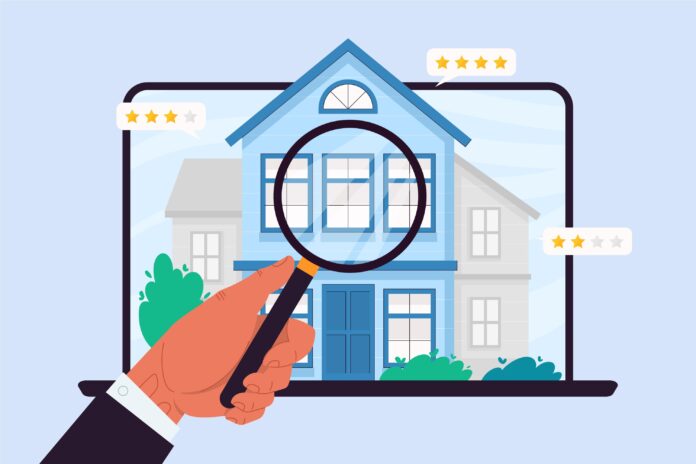Plumbing problems are among the most common issues homeowners face, often causing inconvenience, damage, and costly repairs. From leaky pipes to clogged drains, understanding these common plumbing pitfalls is crucial for maintaining a functional and efficient plumbing system. In this article, we’ll delve into eight common plumbing issues, their causes, and effective solutions to address them.
Leaky Pipe Dangers: Identifying and Addressing
Leaky pipes can lead to water damage, mold growth, and structural issues if left untreated. During a home inspection Columbus Ohio, it’s essential to check for signs of leaking pipes, such as water stains, mold, or musty odors. Common causes of leaks include corrosion, high water pressure, and deteriorated pipe joints.
Addressing leaky pipes promptly is crucial to prevent further damage. Depending on the severity of the leak, solutions may include tightening pipe fittings, repairing or replacing damaged pipes, or installing pipe insulation to prevent future leaks.
Clogged Drain Culprits: Prevention and Solutions
Clogged drains are another common plumbing issue that can disrupt daily activities and lead to unpleasant odors and backups. Hair, soap scum, food particles, and grease are typical culprits behind clogged drains. To prevent clogs, homeowners should avoid pouring grease down the drain, use drain covers to catch debris, and regularly clean drains using natural or commercial drain cleaners.
When faced with a clogged drain, homeowners can try using a plunger or drain snake to clear the blockage. For stubborn clogs, professional plumbing services may be necessary to ensure thorough removal and prevent further damage to the pipes.
Faulty Fixture Woes: Fixing Faucet and Toilet Problems
Faulty fixtures such as leaky faucets and running toilets are not only annoying but can also waste water and increase utility bills. Common causes of faucet leaks include worn-out seals, corroded valve seats, or loose O-rings. Similarly, running toilets may be caused by faulty flapper valves, damaged fill valves, or worn-out toilet handles.
Repairing faulty fixtures often requires replacing worn-out components or tightening loose connections. Regular maintenance, such as replacing washers and O-rings, can help prevent faucet leaks, while adjusting or replacing toilet components can resolve running toilet issues.
Water Pressure Problems: Causes and Resolutions
Water pressure problems can manifest as weak flow or excessive pressure, both of which can affect the performance of plumbing fixtures and appliances. Low water pressure may be caused by sediment buildup in pipes, a malfunctioning pressure regulator, or leaks in the plumbing system. On the other hand, high water pressure can stress pipes, increase the risk of leaks, and cause premature wear on fixtures.
Identifying the cause of water pressure problems is essential for effective resolution. Solutions may include cleaning or replacing clogged pipes, adjusting the pressure regulator, or installing a pressure-reducing valve to stabilize water pressure throughout the home.
Sewer Line Nightmares: Signs and Solutions
Sewer line issues pose significant risks to homeowners, including foul odors, sewage backups, and potential health hazards. Signs of sewer line problems include slow drains, gurgling noises, sewage backups, and soggy patches in the yard. Common causes of sewer line issues include tree root intrusion, pipe corrosion, and blockages from debris or grease buildup.
Addressing sewer line problems often requires professional intervention. Video camera inspections can pinpoint the exact location and cause of the issue, allowing for targeted repairs or replacement of damaged sewer lines.
Pipe Corrosion Risks: Detecting and Preventing Damage
Pipe corrosion can lead to leaks, reduced water quality, and premature pipe failure. Factors such as water chemistry, pipe material, and soil conditions can contribute to corrosion. During a home inspection, signs of pipe corrosion may include discolored water, foul odors, or visible rust on exposed pipes.
Preventing pipe corrosion involves controlling water chemistry, installing corrosion-resistant pipes, and applying protective coatings. Regular maintenance, such as flushing the water heater and inspecting pipes for signs of corrosion, can help identify and address corrosion before it causes significant damage.
Frozen Pipe Fiascos: Winterization Tips
Frozen pipes are a common winter plumbing issue that can result in burst pipes and extensive water damage. To prevent frozen pipes, homeowners should insulate exposed pipes, seal air leaks, and drain outdoor faucets before the onset of cold weather. During periods of freezing temperatures, allowing faucets to drip and keeping cabinet doors open to promote warm air circulation can help prevent pipes from freezing.
In the event of frozen pipes, homeowners should thaw them slowly using gentle heat sources such as a hairdryer or heating pad. It’s crucial to avoid using open flames or high-heat appliances, as they can damage pipes and increase the risk of fire.
Backflow Troubles: Understanding and Avoiding
Backflow occurs when contaminated water flows backward into the clean water supply, posing serious health risks to occupants. Common causes of backflow include back siphonage, caused by negative pressure in the water supply, and back pressure, caused by increased pressure in the plumbing system. To prevent backflow, homeowners should install backflow prevention devices, such as backflow preventer valves, on vulnerable fixtures and appliances.
Regular maintenance and testing of backflow prevention devices are essential to ensure they function properly and comply with local plumbing codes. In the event of a backflow incident, homeowners should immediately shut off the water supply and contact a qualified plumber to assess and rectify the situation.
Conclusion
Understanding common plumbing pitfalls and implementing proactive maintenance strategies is essential for preserving the integrity and functionality of your home’s plumbing system. By identifying potential issues early and addressing them promptly, homeowners can avoid costly repairs and ensure the continued comfort and safety of their homes.



